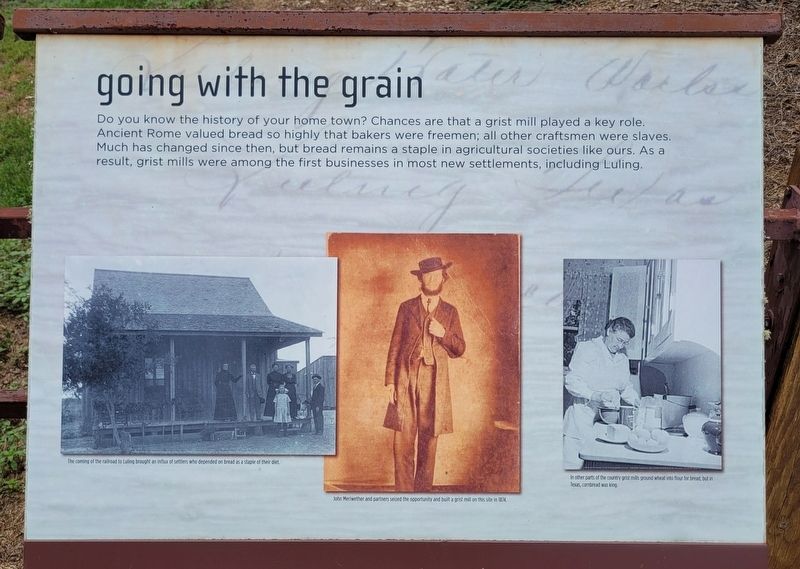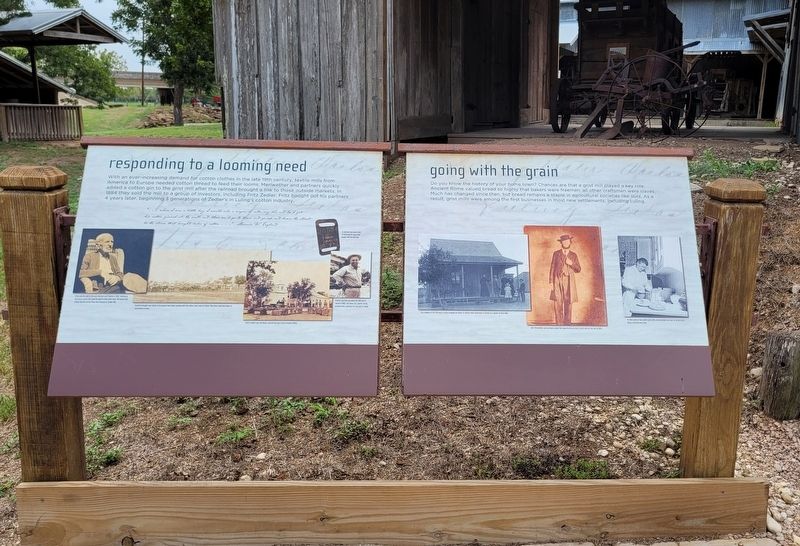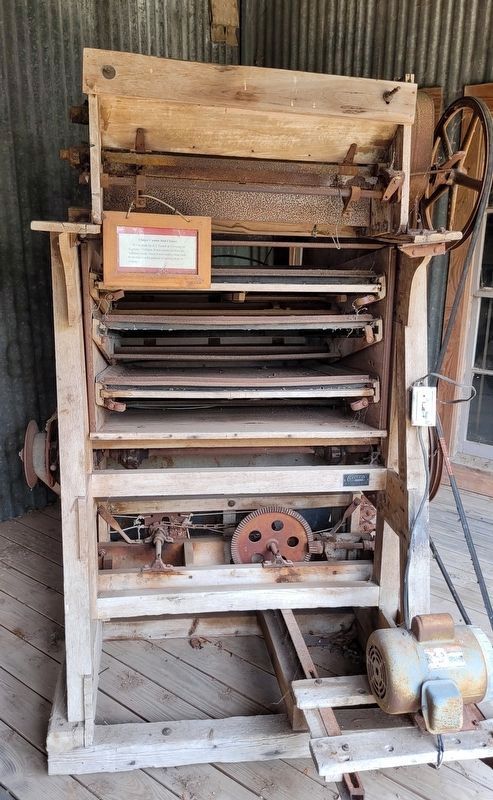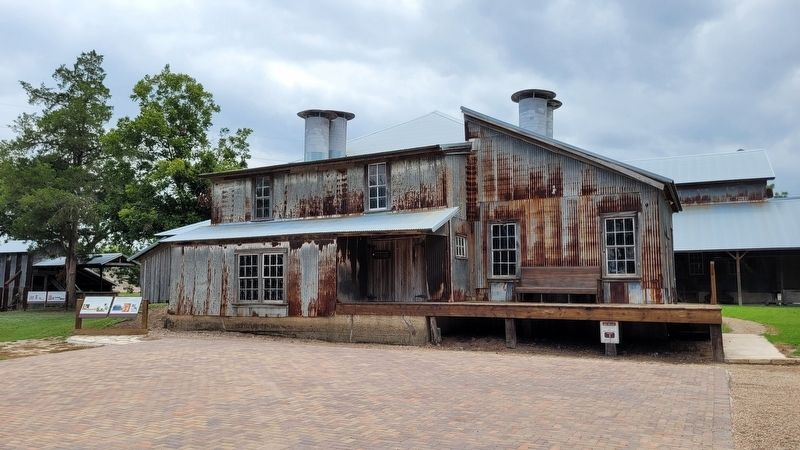Luling in Caldwell County, Texas — The American South (West South Central)
Going with the Grain
Captions
Lower Left: The coming of the railroad to Luling brought an influx of settlers who depended on bread as a staple of their diet.
Middle Lower: John Meriwether and partners seized the opportunity and built a grist mill on this site in 1874.
Lower Right: In other parts of the country grist mills ground wheat into flour for bread, but in Texas, cornbread was king.
Erected by Zedler Mill Museum and Park.
Topics. This historical marker is listed in these topic lists: Agriculture • Industry & Commerce. A significant historical year for this entry is 1874.
Location. 29° 40.038′ N, 97° 39.074′ W. Marker is in Luling, Texas, in Caldwell County. Marker can be reached from the intersection of South Laurel Avenue and South Magnolia Street (State Highway 80). The marker is located in the central section of the Historic Zedler Mill Museum and Park. Touch for map. Marker is at or near this postal address: 1170 South Laurel Avenue, Luling TX 78648, United States of America. Touch for directions.
Other nearby markers. At least 8 other markers are within walking distance of this marker. Responding to a Looming Need (here, next to this marker); Zedler's Mills (a few steps from this marker); From Boll to Bolt (a few steps from this marker); The Same Old Grind (a few steps from this marker); Mixing to Match (a few steps from this marker); Capitalizing on the Need for Feed (within shouting distance of this marker); Why Here? Why Then? (within shouting distance of this marker); The Lifeblood of Luling (within shouting distance of this marker). Touch for a list and map of all markers in Luling.
More about this marker. The Zedler Mill Park and its parking are free to the public daily. Donations are appreciated when visiting the Zedler Mill Museum.
Also see . . .
1. Zedler Mill Museum & Park. The City of Luling, Texas
In 1885, Bob Innes, John Orchard, J.K. Walker, and a German immigrant mill expert named Fritz Zedler, purchased the site and mill equipment naming it the "Luling Water Power Company". Soon they added a lumber sawmill and Fritz Zedler replaced the existing stone dam with a wooden dam and penstock that could generate more power. Buying out his three partners within a few years, Fritz Zedler became sole owner in 1888 and invited his oldest son, Berthold, to be his partner. Not long after the acquisition, the entire three story facility caught fire in October 1888 and was totally destroyed. The citizens of Luling promised to hold the sale of their cotton crops for the Zedlers to rebuild. Devastated, but not giving up, the Zedler family rebuilt the mill factory and within seven weeks, it was operational.(Submitted on September 1, 2022, by James Hulse of Medina, Texas.)
2. Wheat Culture. Texas State Historical Association
Wheat for grain is one of the state's most valuable cash crops, usually exceeded in value only by cotton lint, sorghum, and rice. Wheat pastures also provide considerable winter grazing for cattle. Wheat was first grown commercially in Texas near Sherman about 1833. The acreage expanded greatly in North Central and East Texas after 1850 due to the rapid settlement of the state and the introduction of the Mediterranean strain of wheat. In 1850 the wheat crop was less than 50,000 bushels, but by 1867 it reached 6,000,000 bushels with a market value of a dollar a bushel. At that time the crop was transported to market on ox wagons. Some planting was done by grain drills, and reaping machines were being used on most farms. Threshers could thresh and clean from 150 to 300 bushels a day.(Submitted on September 1, 2022, by James Hulse of Medina, Texas.)
Credits. This page was last revised on September 1, 2022. It was originally submitted on September 1, 2022, by James Hulse of Medina, Texas. This page has been viewed 82 times since then and 6 times this year. Photos: 1, 2, 3, 4. submitted on September 1, 2022, by James Hulse of Medina, Texas.



